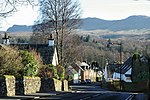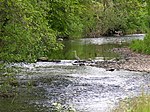A81 road
BearsdenCallanderInfobox road instances in ScotlandMaryhillMilngavie ... and 5 more
Roads in ScotlandTransport in East DunbartonshireTransport in GlasgowTransport in Stirling (council area)Use British English from February 2013

The A81 road is a major road in Scotland. It runs from Glasgow to Callander via Woodside and Maryhill within the city, as well as Bearsden, Milngavie and Strathblane, a total of 30 miles (48 km). The A81 has been ranked among the five most dangerous roads in Scotland based on serious and fatal accidents between 2007 and 2009, in proportion to volume of traffic.
Excerpt from the Wikipedia article A81 road (License: CC BY-SA 3.0, Authors, Images).A81 road
A81,
Geographical coordinates (GPS) Address Nearby Places Show on map
Geographical coordinates (GPS)
| Latitude | Longitude |
|---|---|
| N 56.05614 ° | E -4.39687 ° |
Address
A81
G63 0NN
Scotland, United Kingdom
Open on Google Maps









